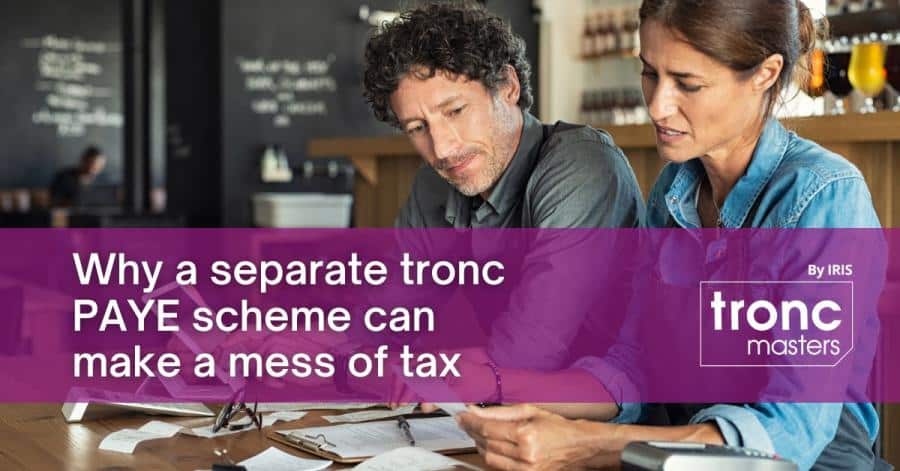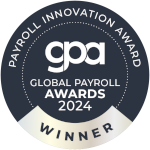
We’re often asked if it’s okay to set up a separate PAYE scheme for your tronc scheme. The answer is yes… but be careful.
It’s probably better to use a single PAYE, and we’ll explain how to do this the right way later.
The problem with having two PAYE schemes is that everything might seem right, but because of the way real-time wages are processed at HMRC, it can give you and your employees a headache – needlessly losing people money and damaging good faith with your staff in the process.
So why exactly are two PAYEs a problem, and what can we do to remedy it?
The problem hidden in the final hurdle
Let’s start with some reassurance: a tronc scheme is still the best way to go when it comes to administering tips.
With a tronc, about 20% is paid in tax by staff with no National Insurance deductions, so employees get the best deal when compared to any other type of tip distribution. There’s also no National Insurance cost to the hospitality business.
With a tronc, the minimum is paid back to the treasury.
In short, it ensures the best-case scenario for all involved. It’s also the way forward for the industry as a whole: the UK Government is legislating for hospitality staff to get all tips they are entitled to – and so to follow the spirit of the new law, it’s important employers are as tax efficient as possible as they may soon have to bear other costs that were previously recouped from tips.
It might seem easy to set things up correctly “on the ground” – so the correct money is set aside, and the right staff oversee everything – only for the payroll stage to go horribly wrong.
One of the ways this can happen is through having two PAYE schemes: one for the employer’s wages and the other for tip payments. On the face of it, this may feel like good accounting: you’re separating the tip money from cash that’s subject to National Insurance.
However, what’s harder to predict is what this doubling up of PAYE submissions will do to the systems at HMRC!
Why can it go wrong with a second PAYE scheme?
Setting up a new PAYE scheme in addition to your existing scheme can trigger some issues with employees’ tax codes.
The reason is that any second PAYE submission received by HMRC is automatically flagged as staff having “other” employment. People then get taxed at the basic rate from this separate tronc payroll.
And, because the HMRC system cannot see any difference between a second employment or tronc payments, it can result in new tax code letters every month. Of course, split tax codes mean a split personal allowance.
Staff can end up paying too much tax if one allowance is stretched across both codes… or too little if the system allocates incorrectly split personal allowances to both PAYE schemes.
Consequently, people will have to pay either too much money upfront before the mistake is spotted or find themselves paying too little before encountering a budget-breaking bill from HMRC at the end of the tax year. Whilst this is not the employers’ fault, often employees will see this as an issue created by the employer and such a situation can cause a drop in motivation and employee satisfaction.
We recommend that if you’re going to set up a PAYE scheme, you process it through the business’s existing scheme, with the correct amount of tax being collected at the correct time.
But how do you do that correctly?
Getting the PAYE scheme right for troncs
So the aim, then, is to have one PAYE scheme, with tronc payments included as “non-income”. That means tips won’t have National Insurance deducted.
This can be easier said than done.
It’s essential that you or whoever handles your payroll has the right software to properly flag non-income payments. Sometimes it may appear that the money has been classed correctly, but it turns out the software’s flagging system only works in certain contexts. When this happens, those administering the pay may think all is well, but then, after avoiding National Insurance, the tips are lumped in with pay that has student loans or a pension deducted from it.
Needless to say, if it does, everyone could end up incorrectly paying National Insurance or other incorrect deductions, thus negating the advantage of a tronc scheme! Always check after the first pay run to make sure this has not occurred, or ask your Troncmaster to check this (if they understand payroll).
So how can you be sure to get it right?
Troncmasters will ensure tips are distributed correctly, saving you and your staff money, providing ease of mind for your leadership team, and taking the stress off staff who otherwise would have to shoulder a difficult task.
Our specialists can advise your business on setting up a tronc scheme without the need to set up a second tronc PAYE. And, with our many years of payroll and hospitality experience, if you would like to outsource your tronc and payroll to us, you can rely on us for up-to-the-minute advice and support.
Click here to find out more.
